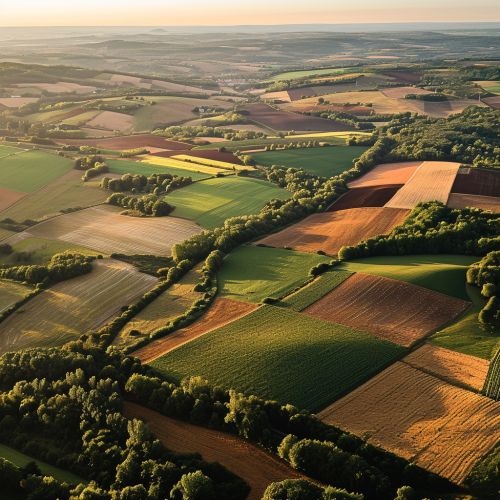Regions of France
Geography
France is divided into 18 administrative regions, which are further subdivided into 101 departments. Five of these regions are situated overseas. Each region has its own unique geographical and cultural characteristics that distinguish it from the others.


History and Formation
The concept of regions in France was first established in the 1950s, but it wasn't until the decentralization laws of 1982-1983 that they gained legal status. The number of regions has changed over time, with the most recent adjustment occurring in 2016 when the number was reduced from 22 to 13 in mainland France as part of a national territorial reform.
Mainland Regions
Île-de-France
Île-de-France is the most populous of the regions and includes the capital city, Paris. It is the economic and cultural hub of the country, and is known for its influential arts scene and historic sites.
Normandy
Normandy, located in the north-west of France, is renowned for its coastline, including the dramatic cliffs at Etretat and the WWII landing beaches. It's also the birthplace of impressionism, thanks to the artist Claude Monet.
Hauts-de-France
Hauts-de-France, bordering Belgium, is known for its rich history, which includes notable WWI and WWII sites. The region also boasts a strong industrial heritage, particularly in mining.
Grand Est
Grand Est, bordering Germany and Switzerland, is a region known for its diverse landscapes, from the Vosges Mountains to the Rhine River. It's also home to the Champagne wine region.
Brittany
Brittany is a region with a strong cultural identity, with its own language and traditions. Its rugged coastline, medieval towns, and megalithic monuments are among its highlights.
Nouvelle-Aquitaine
Nouvelle-Aquitaine, the largest region in France, is known for its varied landscapes, from the Pyrenees mountains to the Atlantic coastline. It's also home to the famous Bordeaux wine region.
Occitanie
Occitanie is a region defined by its two main cities, Toulouse and Montpellier. It's known for its Mediterranean coastline, the Pyrenees mountains, and historic sites such as the medieval city of Carcassonne.
Auvergne-Rhône-Alpes
Auvergne-Rhône-Alpes is a region known for its diverse landscapes, including the French Alps, the Rhône Valley, and the volcanic terrain of the Auvergne. It's also home to France's second-largest city, Lyon.
Provence-Alpes-Côte d'Azur
Provence-Alpes-Côte d'Azur, often known as PACA, is a region known for its Mediterranean coastline, including the glamorous French Riviera. It's also home to the cities of Marseille and Nice, and the stunning Verdon Gorge.
Bourgogne-Franche-Comté
Bourgogne-Franche-Comté is a region known for its wine and cuisine, particularly its mustard and cheese. It's also home to the historic cities of Dijon and Besançon.
Centre-Val de Loire
Centre-Val de Loire is a region known for its châteaux, with over 300 located in the area, including the famous Château de Chambord. It's also home to the historic cities of Tours and Orléans.
Pays de la Loire
Pays de la Loire is a region known for its diverse landscapes, from the Atlantic coastline to the Loire Valley. It's also home to the city of Nantes and the famous Le Mans racetrack.
Corsica
Corsica is a region with a distinct culture and identity. Known for its rugged mountains and beautiful coastline, it's a popular destination for outdoor enthusiasts.
Overseas Regions
The five overseas regions of France are Guadeloupe, Martinique, French Guiana, Réunion, and Mayotte. Each of these regions has a unique culture and geography that reflects their location in the Caribbean, South America, and the Indian Ocean.
Governance
Each region in France is governed by a regional council, which is elected for a six-year term. The council is responsible for regional economic development, transportation, high schools, and vocational training.
Economy
The economy of each region in France varies based on its natural resources, industries, and tourism. Île-de-France is the wealthiest region, contributing to nearly 30% of France's GDP.
Culture
Each region in France has its own unique culture, including language, cuisine, traditions, and festivals. This regional diversity is a key aspect of French identity.
